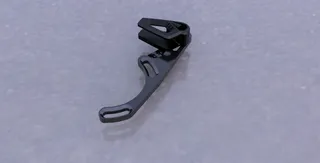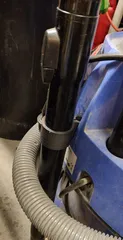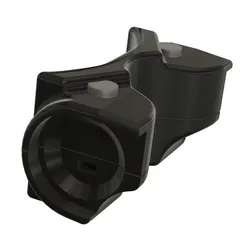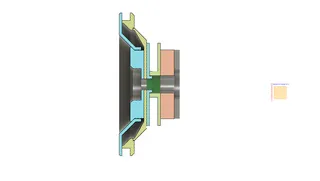Sovol SV06 Stealthburner mount with Klackender support
Description
PDFPlease see the original model for description regarding the Stealthburner mount.
As for the Klackender probe and how to use it, you can find all the instructions here:
https://www.printables.com/model/332025-klackender-probe
I can not add the probe in the remix field since the Stealthburner mount has a different license model…
You will need screws and slot-nuts for the 20x40 extrusion on the gantry to mount the probe retainer and a longer bolt to mount the probe dock to the underside of the idler side of the gantry, if you are tinkering, you should have that kind of hardware at home :-)
You will need to print the probe from the Klackender repository and also follow instructions for assembly. The magnet will fit in the SV06 Probe dock.
The files have been properly oriented, see suggestion for supports for each model file.
I printed with CF-reinforced PETG, should probably use ABS if you can.
Changes to Klackender config for the SV06:
[probe]
pin: PA13 #Using SWDIO-pin for this on the SV06.
z_offset: 1.550 #Measure per your specific setup
x_offset: 16 # negative = left of the nozzle
y_offset: 22 # negative = in front of of the nozzle
speed: 5.0
lift_speed: 15.0
sample_retract_dist: 1
samples: 3
samples_tolerance_retries: 6
##[(7x7)-1] / 2 = 24
##[(5x5)-1] / 2 = 12
[bed_mesh]
speed: 200
horizontal_move_z: 4
mesh_min: 24,30
mesh_max: 208,225
probe_count: 5,5
zero_reference_position: 112.5, 112.5 # This is the position where your nozzle homes to Z0. Adjust according to you setup
algorithm: bicubic
fade_start: 1
fade_end: 10
#fade_target:
# The z position in which fade should converge. When this value is set
# to a non-zero value it must be within the range of z-values in the mesh.
# Users that wish to converge to the z homing position should set this to 0.
# Default is the average z value of the mesh.
split_delta_z: 0.015
# The amount of Z difference (in mm) along a move that will
# trigger a split. Default is .025.
move_check_distance: 3
# The distance (in mm) along a move to check for split_delta_z.
# This is also the minimum length that a move can be split. Default
# is 5.0.
mesh_pps: 4,4
# A comma separated pair of integers (X,Y) defining the number of
# points per segment to interpolate in the mesh along each axis. A
# "segment" can be defined as the space between each probed
# point. The user may enter a single value which will be applied
# to both axes. Default is 2,2.
#bicubic_tension: .2
# When using the bicubic algorithm the tension parameter above
# may be applied to change the amount of slope interpolated.
# Larger numbers will increase the amount of slope, which
# results in more curvature in the mesh. Default is .2.
[homing_override]
axes: z
set_position_z:0 # Make printer think Z axis is at zero, so we can force a move upwards away from build plate
gcode:
G90
G1 Z10 F3000 ; move up to prevent accidentally scratching build plate
{% if "x" not in (printer.toolhead.homed_axes | lower) %}
G28.6245197 X
{% endif %}
{% if "y" not in (printer.toolhead.homed_axes | lower) %}
G28.6245197 Y #Will only home XY if they are not currently homed
{% endif %}
PROBE_OUT
G1 X96.5 Y90.5 F6000
G28.6245197 Z
PROBE_IN
##For Dual Z setups only!! (with indipendent motors, no Y splitters or dual Z port on board!)##
# [z_tilt]
# z_positions:
# 0,117
# 235,117
# # A list of X, Y coordinates (one per line; subsequent lines
# # indented) describing the location of each bed "pivot point". The
# # "pivot point" is the point where the bed attaches to the given Z
# # stepper. It is described using nozzle coordinates (the X, Y position
# # of the nozzle if it could move directly above the point). The
# # first entry corresponds to stepper_z, the second to stepper_z1,
# # the third to stepper_z2, etc. This parameter must be provided.
# points:
# 4,96.5
# 219,96.5
# # A list of X, Y coordinates (one per line; subsequent lines
# # indented) that should be probed during a Z_TILT_ADJUST command.
# # Specify coordinates of the nozzle and be sure the probe is above
# # the bed at the given nozzle coordinates. This parameter must be
# # provided.
# speed: 100
# # The speed (in mm/s) of non-probing moves during the calibration.
# # The default is 50.
# horizontal_move_z: 15
# # The height (in mm) that the head should be commanded to move to
# # just prior to starting a probe operation. The default is 5.
# retries: 10
# # Number of times to retry if the probed points aren't within
# # tolerance.
# retry_tolerance: 0.01
# # If retries are enabled then retry if largest and smallest probed
# # points differ more than retry_tolerance. Note the smallest unit of
# # change here would be a single step. However if you are probing
# # more points than steppers then you will likely have a fixed
# # minimum value for the range of probed points which you can learn
# # by observing command output.
#####################################################################
# KlackEnder- Macros
#####################################################################
[gcode_macro PROBE_OUT]
gcode:
G90
G1 Z15
G1 X225 F4000
G4 P300
G1 X5
[gcode_macro PROBE_IN]
gcode:
G90
G1 Z20
G1 X225 F20000
G1 Y5 #Check this against your config of [stepper_y] position_min: ...!
G1 Z0
G4 P300
G1 X200 F6000
G1 Z10
G1 X5
[gcode_macro BED_MESH_CALIBRATE]
rename_existing: _BED_MESH_CALIBRATE
gcode:
PROBE_OUT
_BED_MESH_CALIBRATE
PROBE_IN
[gcode_macro G29]
gcode:
PROBE_OUT
BED_MESH_CALIBRATE
#G1 Y0 F20000
PROBE_IN
[gcode_macro PROBE_CALIBRATE]
rename_existing: _PROBE_CALIBRATE
gcode:
{% if not 'xyz' in printer.toolhead.homed_axes %}
G28
{% endif %}
PROBE_OUT
G90
G1 Z20
G1 X96.5 Y90.5 F20000
_PROBE_CALIBRATE
TESTZ Z=20
M117 Remove the Klack to continue calibration!
[gcode_macro PROBE_ACCURACY]
rename_existing: _PROBE_ACCURACY
gcode:
{% if not 'xyz' in printer.toolhead.homed_axes %}
G28
{% endif %}
PROBE_OUT
G90
G1 X96.5 Y90.5 F20000
_PROBE_ACCURACY
PROBE_INTags
Model origin
The author remixed this model.
Differences of the remix compared to the original
Except for adding the Klackender mount and the Probe dock and retainer I also fixed the hole pattern for the SB mount.
It was of by 0.5mm for two of the holes.




